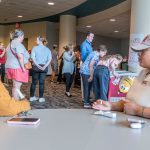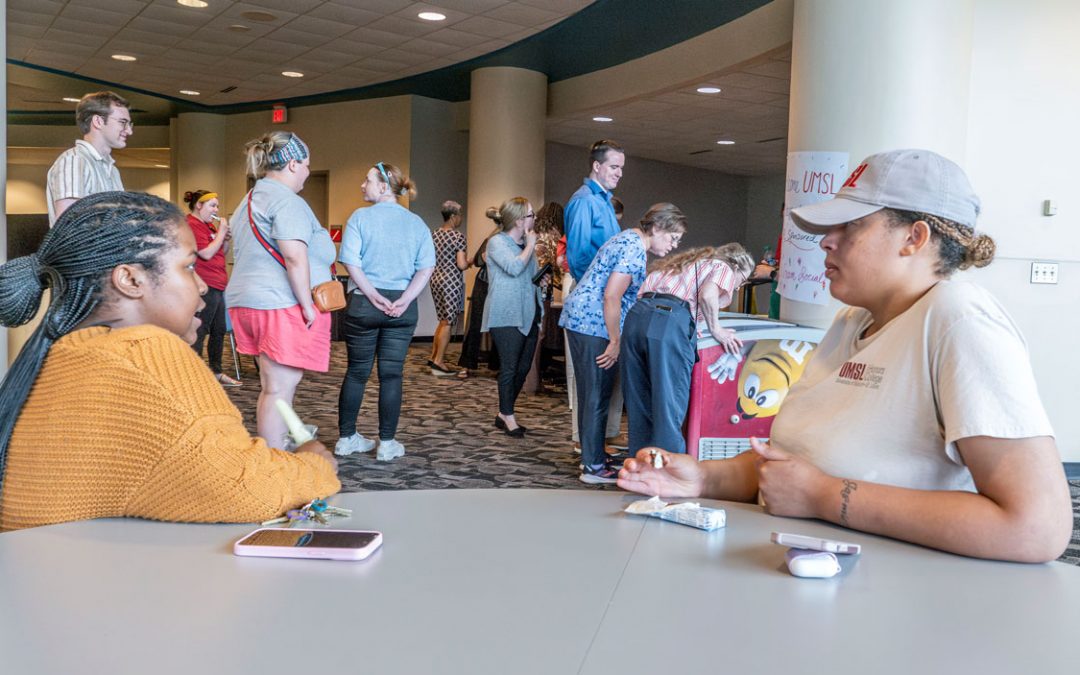
Finn-Aage Esbensen, the E. Desmond Lee Professor of Youth Crime and Violence at UMSL, was named a Fellow of the American Society of Criminology. (Photo by August Jennewein)
Finn-Aage Esbensen, the E. Desmond Lee Professor of Youth Crime and Violence at the University of Missouri–St. Louis, has joined the ranks of an elite group of people, several of whom he shares a roof.
Esbensen, the chair of the Department of Criminology and Criminology Justice at UMSL, was recently named a Fellow of the American Society of Criminology. The department now has five faculty members, all full professors, who are fellows. UMSL criminologists Bob Bursik, Janet Lauritsen, Richard Rosenfeld and Richard Wright are also fellows.
“That shouldn’t be interpreted as this is normative, because many departments (in other universities) have no fellows,” Esbensen said. “I think this just speaks to the strength of our faculty and our department.”
And the idea that he’s now joined many of his mentors and colleagues isn’t lost on him.
“It’s kind of mind-boggling to receive recognition like this,” he said. “I look at the names of the people who are on the list already and as in other disciplines, it’s a list of who’s who. There are scholars whose work I read when I was an undergraduate, so joining them and my colleagues already on this list is really rewarding.”
The naming of fellow is meant to recognize a scholar for achieving distinction in criminology through cumulative research and work, and it also requires contributions to the discipline through the training of students and service to the profession.
Esbensen, who joined the faculty at UMSL 13 years ago, has spent the last 20 years focusing his research on evaluation of gang prevention school-based programs and working toward implementing cross-national research on youth gangs.
Most recently, his work has been on researching and evaluating the Gang Resistance Education and Training program, an effective gang and violence prevention program built around school-based, law enforcement officer-instructed classroom curricula.
Through funding from the Department of Justice, Esbensen has been analyzing the program since 1994.
“In 2001, our evaluation lead to a revamp of the program, ” he said. “It’s a rare example of when research actually impacts policy and change.”
Then in 2006, he received additional funding to evaluate the revamped program.
“We looked at seven cities, in 31 schools and we followed 4,000 kids for five years through their educational experiences and surveyed them every year,” Esbensen said. “Based on their response to the surveys we can say that the program had a positive effect on kids, reduced the odds of them joining gangs, improved their attitudes toward the police and also reduced other risk factors known to be associated with violence and gang joining.”
Additionally he is working on a side study, where his research team interviewed 180 kids from the program to take a deeper look into what motivated them.
“We are trying to see why they join gangs, why they leave, what role gangs play in their lives and neighborhoods,” Esbensen said.
The data on that project is expected to be available in September 2015.
And if that’s not enough to keep him busy, he is currently working on the 9th addition of his text book, “Criminology: Explaining Crime & It’s Context.” He’s also coming off the most successful year of his annual Youth Violence Prevention Conference, which was held in April and attracted more than 250 participants.














